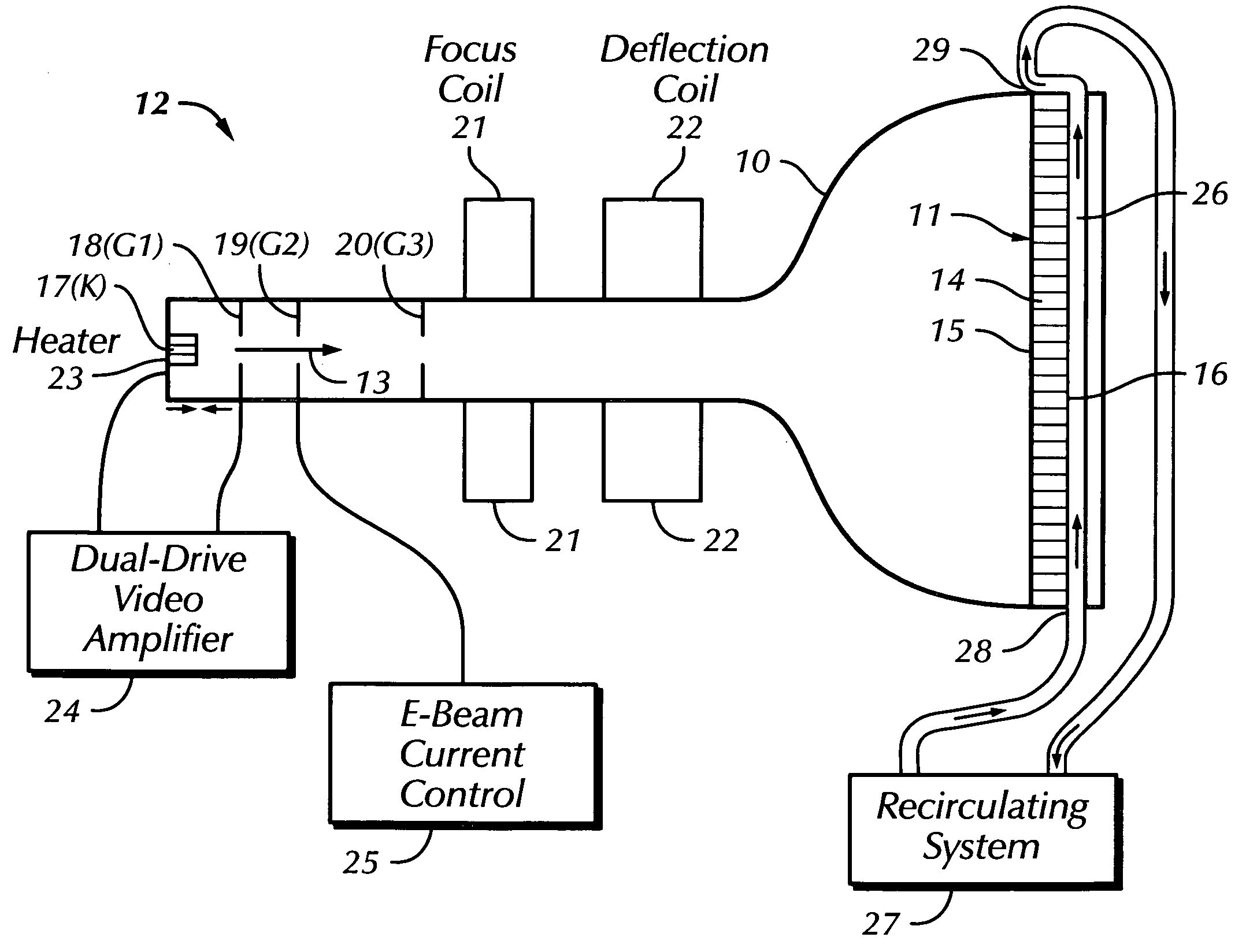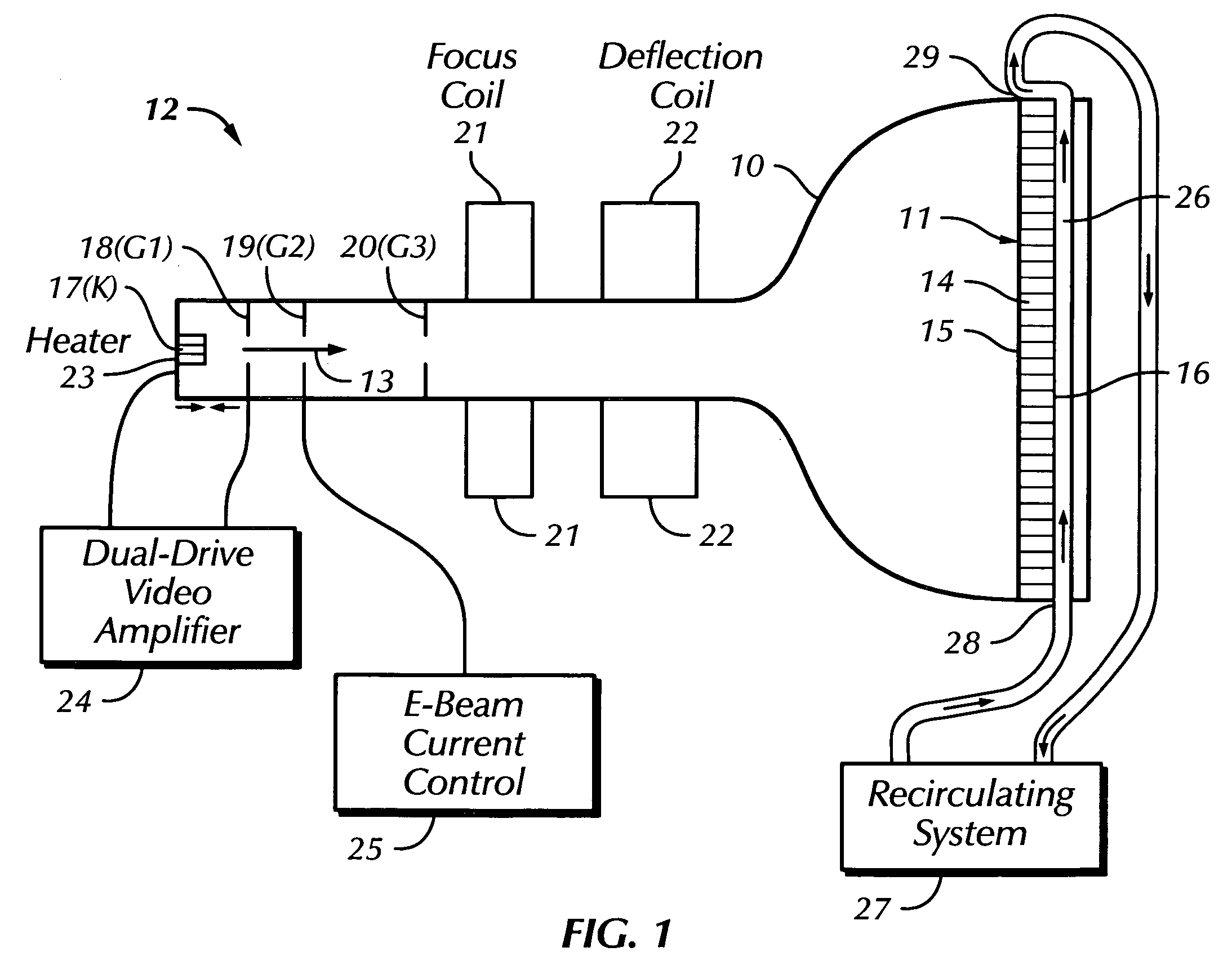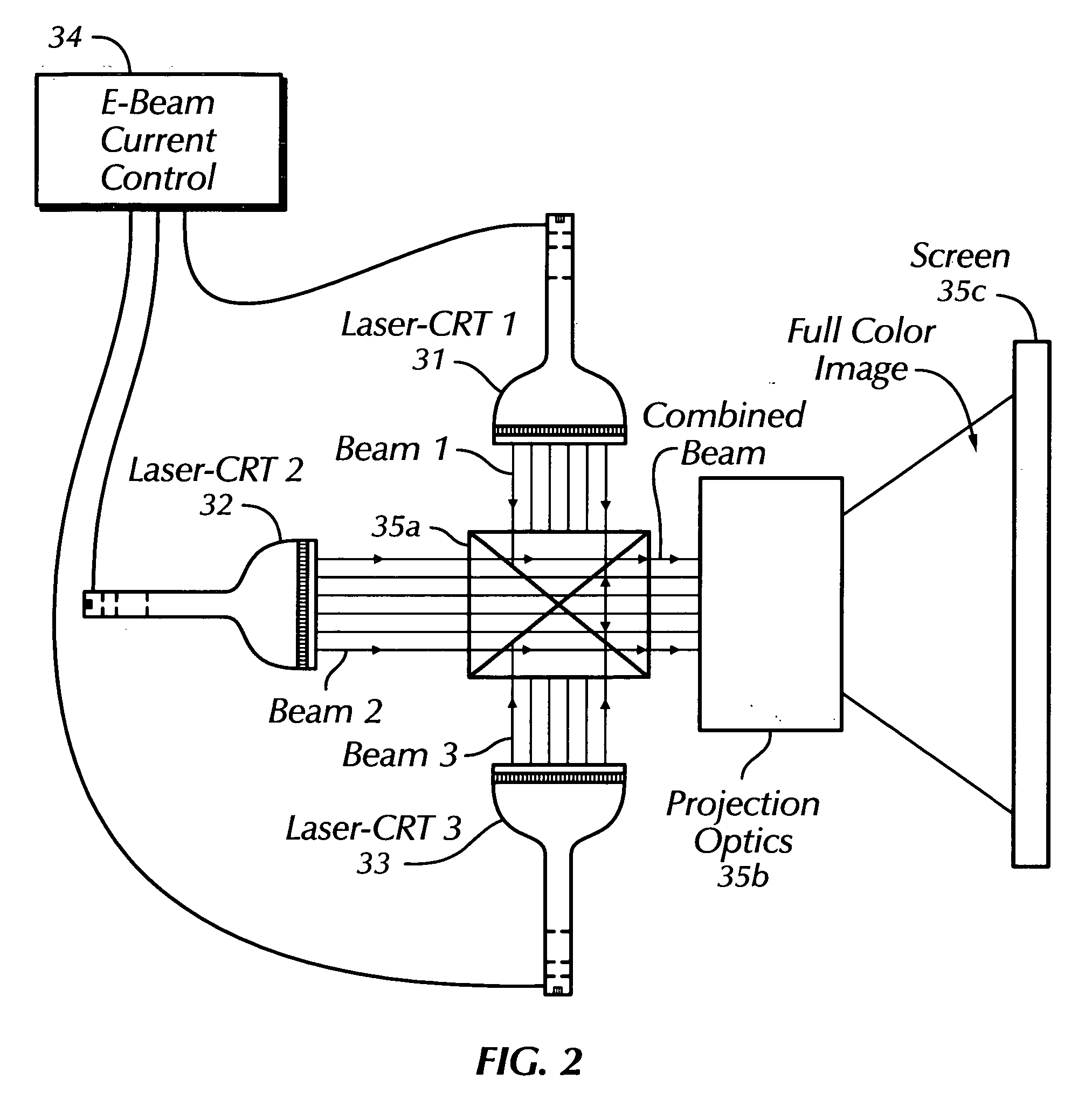Laser cathode ray tube
- Summary
- Abstract
- Description
- Claims
- Application Information
AI Technical Summary
Benefits of technology
Problems solved by technology
Method used
Image
Examples
Embodiment Construction
[0022] This invention is described in the following description with reference to the Figures, in which like numbers represent the same or similar elements.
[0023] A Laser-CRT described herein includes a vacuum tube that has a laser faceplate that emits laser radiation in response to impingement by an electron beam.
[0024]FIG. 1 is a cross-sectional view of a Laser-CRT that includes a funnel-shaped glass envelope 10 that forms the outer surface of a vacuum tube. A laser faceplate 11 is situated on the wide end of the funnel, and the narrow opposite end includes an electron gun apparatus 12 that generates and directs the electron beam 13 to the faceplate. In one embodiment the laser faceplate includes a layer of active gain material 14 situated between two reflective layers (including one fully reflective layer 15 and one partially reflective layer 16) to define a laser cavity area. Since the laser area is typically homogeneous across the faceplate, laser action is created at the poi...
PUM
 Login to View More
Login to View More Abstract
Description
Claims
Application Information
 Login to View More
Login to View More - R&D
- Intellectual Property
- Life Sciences
- Materials
- Tech Scout
- Unparalleled Data Quality
- Higher Quality Content
- 60% Fewer Hallucinations
Browse by: Latest US Patents, China's latest patents, Technical Efficacy Thesaurus, Application Domain, Technology Topic, Popular Technical Reports.
© 2025 PatSnap. All rights reserved.Legal|Privacy policy|Modern Slavery Act Transparency Statement|Sitemap|About US| Contact US: help@patsnap.com



